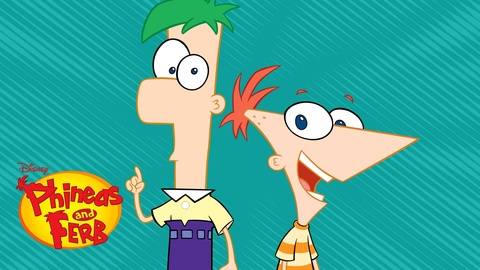PHINEAS AND FERB ARE GONNA DO IT ALL
As a child, my favorite show was Phineas and Ferb. From memorizing all of their theme song to watching in amazement as the constructed a roller coaster into the sky, this show played a large role in the development of my imagination and creativity. Every character holds a special place in my heart, especially Perry the platypus, who managed to thwart Dr. Doofenschmirtz evil plots. Each engaging episode filled my young mind with new thoughts, ideas, and contraptions, causing me to want to become an architect when I grew up.
Each character taught me certain stereotypes about people that I held with my peers. Many of the characters fit certain stereotypes, such as a personality matching how they look. For example, there was Buford, who was the fat, white tough guy - or Ballet, who was the nerdy, scrawny Indian kid who was smart. These characterizations that I learned from media translated into how I saw kids at school and in my surroundings. Whenever I saw people with physical appearances that matched who I saw in the show, I automatically made assumptions about them. Even the most whimsical of kid shows can still create certain images that reflect into their reality. Although this show is focused around imagination, it still played into many of the stereotypes that plague our society today. In turn, I grew up through elementary school mimicking the identity of Baljeet who was scrawny and smart. I was frightened when I saw big, tough looking kids because I thought that they would be bullies. I love this show, but the reality is that it unintentionally created stereotypes that play through my mind today.
Each character taught me certain stereotypes about people that I held with my peers. Many of the characters fit certain stereotypes, such as a personality matching how they look. For example, there was Buford, who was the fat, white tough guy - or Ballet, who was the nerdy, scrawny Indian kid who was smart. These characterizations that I learned from media translated into how I saw kids at school and in my surroundings. Whenever I saw people with physical appearances that matched who I saw in the show, I automatically made assumptions about them. Even the most whimsical of kid shows can still create certain images that reflect into their reality. Although this show is focused around imagination, it still played into many of the stereotypes that plague our society today. In turn, I grew up through elementary school mimicking the identity of Baljeet who was scrawny and smart. I was frightened when I saw big, tough looking kids because I thought that they would be bullies. I love this show, but the reality is that it unintentionally created stereotypes that play through my mind today.

Comments
Post a Comment